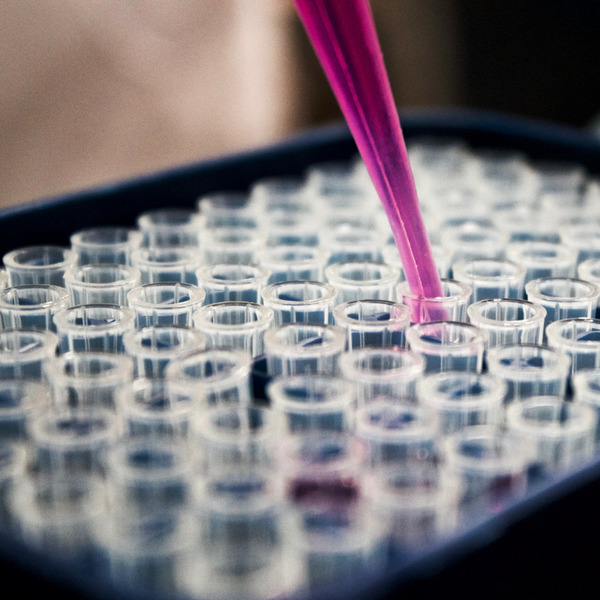
INTENDED USE
The QuickVue RSV Test is a dipstick immunoassay which allows for the rapid, qualitative detection of respiratory syncytial virus (RSV) antigen (viral fusion protein) directly from nasopharyngeal swab, nasopharyngeal aspirate, or nasal/nasopharyngeal wash specimens for symptomatic pediatric patients (eighteen years of age and younger). The test is intended for use as an aid in the diagnosis of acute respiratory syncytial viral infections. It is recommended that negative test results be confirmed by cell culture. Negative results do not preclude RSV infection and it is recommended that they not be used as the sole basis for treatment or other management decisions. The test is intended for professional and laboratory use.
SUMMARY AND EXPLANATION
Respiratory syncytial virus is a single-stranded (negative strand) RNA virus of the Paramyxoviridae family.1 It is the causative agent of a highly contagious, acute, viral infection of the respiratory tract. Nearly half of all children become infected by their first year of life. It is also the major viral cause of nosocomial illness in children already hospitalized for other reasons.2 In the United States, RSV is estimated to be responsible for 73,400 to 126,300 hospitalizations annually for bronchiolitis and pneumonia alone among children younger than 1 year.3 In children hospitalized with RSV infection, it is believed to be the most common viral cause of death in children younger than 5 years, particularly in children younger than one year.4 Among children hospitalized with RSV infection, the mortality rate is estimated to be as low as 0.3% to 1.0%3,5,6,7 and in the range of 2.5% to 4.0% for children with underlying cardiac or pulmonary disease.3,5,8
PRINCIPLE OF THE PROCEDURE
The QuickVue RSV Test is a dipstick immunoassay that allows the capture and visual detection of RSV antigen (viral fusion protein). The patient specimen is placed in the Extraction Tube containing the Extraction Reagent, enhancing the exposure of the viral fusion protein antigen. After extraction, the Test Strip is placed in the Extraction Tube where the RSV fusion proteins in the specimen will react with the reagents in the Test Strip.
If the extracted specimen contains RSV antigens, a pink-to-red Test Line, along with a blue procedural Control Line, will appear on the Test Strip indicating a positive result. If RSV type antigens are not present, or are present at very low levels, only a blue procedural Control Line will appear.
